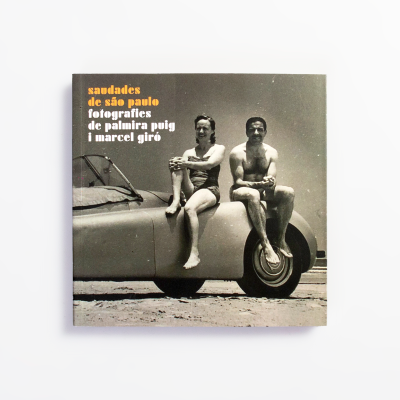Giró, Marcel
He studied at the National School of Badalona and later at the Industrial School of Terrassa while working in the family factory. From a young age, he was passionate about the mountains and photography. At the beginning of the Spanish Civil War, he mobilized as a volunteer for the Pyrenees Regiment, under the authority of the Government of Catalonia. In 1937, disappointed by the constant clashes between the different factions fighting against Franco, he decided to go into exile. He crossed the Pyrenees on foot, from Berga to France, where he lived for almost two years doing all kinds of jobs. Finally, in 1940, he was able to travel to Colombia with two Catalan companions, where they set up a small textile business. He married the Catalan Palmira Puig, and they moved to Brazil, where they settled. In Brazil, Giró resumed his hobby and eventually became a professional photographer. In 1953, he opened his own studio in São Paulo, Estúdio Giró. Marcel Giró became one of the country's leading photographers, a prominent member of what became known as the Paulista School. This movement, a pioneer of modern photography in Brazil, emerged around the Foto Cine Club Bandeirante in the 1950s, with photographers such as José Yalenti, Thomaz Farkas, Benedito Junqueira Duarte, Gertrudes Altschul, Eduardo Salvatore, Chico Albuquerque, Geraldo de Barros, Rubens Teixeira Scavone, Ademar Manarini, Willian Brigata, Emil Issa, German Lorca, Moacir Moreira, Alfio Trovato, and Gaspar Gasparian, among others. He exhibited his works throughout Brazil and around the world. One of his photographs, "Luz e força," was selected for the exhibition "Photography in the Fine Arts" (New York, 1968) and is part of the collection of the Metropolitan Museum of Art in New York. Currently, his works are in the São Paulo Museum of Art (MASP), the MoMA in New York, and numerous private collections worldwide. Giró was also one of the pioneers of advertising photography in Brazil. In his studio, young assistants worked who would later become globally recognized photographers such as JR Duran and Marcio Scavone. After the death of his wife in 1978, he left professional and artistic photography. He sold the studio and returned to Catalonia. During the 1980s and 1990s, he traveled with his partner Paquita Raigal and began painting with a style very close to that of his 1950s photographs. He died in Mirasol (Barcelona) on August 24, 2011, at the age of 98.


